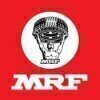Filter interviews by
Yazaki Quality Engineer Interview Questions and Answers
6 Interview questions
The 7Q tool is a problem-solving method used to identify root causes by asking 'why' seven times.
The 7Q tool helps in root cause analysis by encouraging deeper investigation.
Example: If a machine fails, asking 'why' repeatedly can uncover underlying issues like maintenance neglect.
It promotes a systematic approach to problem-solving in quality engineering.
The technique is applicable in various industries, includin...
8D is a problem-solving methodology used to identify, correct, and eliminate recurring issues in processes or products.
D1: Team Formation - Assemble a cross-functional team to address the problem.
D2: Problem Description - Clearly define the problem with data and evidence.
D3: Interim Containment Actions - Implement temporary measures to contain the issue.
D4: Root Cause Analysis - Identify the root cause using tools...
Defect prevention can be achieved through various methods such as implementing quality control processes, conducting thorough inspections, and continuous improvement efforts.
Implementing quality control processes to catch defects early on
Conducting thorough inspections at various stages of production
Utilizing statistical process control to monitor and improve processes
Implementing error-proofing techniques to prev...
Cp measures the capability of a process to meet specifications, while Cpk measures the capability of a process to meet specifications considering centering.
Cp is a short-term capability index, while Cpk is a long-term capability index.
Cp considers only the spread of the process, while Cpk considers both the spread and the centering of the process.
Cp is calculated using the formula Cp = (USL - LSL) / (6 * standard ...
There are 5 levels in PPAP (Production Part Approval Process).
PPAP has 5 levels: Level 1, Level 2, Level 3, Level 4, and Level 5.
Each level represents a different stage of the PPAP process.
Level 1 includes documentation submission, while Level 5 involves customer approval.
The higher the level, the more comprehensive the PPAP requirements become.
PPAP is used to ensure that suppliers meet the quality standards of th...
CAPA stands for Corrective and Preventive Action. It is a systematic approach to identify, investigate, and resolve quality issues.
CAPA is a key component of quality management systems.
It involves identifying the root cause of a problem, implementing corrective actions to address the immediate issue, and preventive actions to prevent recurrence.
CAPA processes typically include steps like problem identification, in...
Yazaki Quality Engineer Interview Experiences
10 interviews found
I applied via Referral and was interviewed in Apr 2024. There were 2 interview rounds.
(2 Questions)
- Q1. Why you want to associate with Yazaki
- Q2. Explain two things which keeps you different from others
- Ans.
I combine analytical thinking with a strong commitment to teamwork, ensuring quality outcomes in every project.
Analytical Thinking: I excel at breaking down complex problems into manageable parts, as demonstrated when I identified a critical defect in a product line that saved the company significant costs.
Team Collaboration: I actively foster a collaborative environment, leading a cross-functional team to improve test...
(2 Questions)
- Q1. How you prevent defect from generation
- Ans.
Defect prevention can be achieved through various methods such as implementing quality control processes, conducting thorough inspections, and continuous improvement efforts.
Implementing quality control processes to catch defects early on
Conducting thorough inspections at various stages of production
Utilizing statistical process control to monitor and improve processes
Implementing error-proofing techniques to prevent h...
- Q2. Quality analysis tool explaination
- Q1. Difine the 8D?
- Ans.
8D is a problem-solving methodology used to identify, correct, and eliminate recurring issues in processes or products.
D1: Team Formation - Assemble a cross-functional team to address the problem.
D2: Problem Description - Clearly define the problem with data and evidence.
D3: Interim Containment Actions - Implement temporary measures to contain the issue.
D4: Root Cause Analysis - Identify the root cause using tools like...
- Q2. What is the 7Q tool?
- Ans.
The 7Q tool is a problem-solving method used to identify root causes by asking 'why' seven times.
The 7Q tool helps in root cause analysis by encouraging deeper investigation.
Example: If a machine fails, asking 'why' repeatedly can uncover underlying issues like maintenance neglect.
It promotes a systematic approach to problem-solving in quality engineering.
The technique is applicable in various industries, including man...
I applied via LinkedIn and was interviewed in Jun 2024. There was 1 interview round.
(2 Questions)
- Q1. Tell me your self
- Ans.
I am a dedicated Quality Engineer with a strong background in quality control and process improvement.
Experienced in implementing quality control procedures
Skilled in root cause analysis and problem-solving
Proficient in statistical analysis tools like Minitab
Certified in Six Sigma and Lean methodologies
- Q2. Strength & weakness
I applied via Company Website and was interviewed in Aug 2023. There were 3 interview rounds.

(4 Questions)
- Q1. Which communication style and values help you to share ideas clearly with team members
- Ans.
Effective communication styles and values foster clarity and collaboration among team members, enhancing idea sharing.
Active Listening: I prioritize understanding others' perspectives before sharing my own ideas.
Clarity and Conciseness: I strive to present my thoughts in a straightforward manner, avoiding jargon when possible.
Open-mindedness: I encourage feedback and different viewpoints, which helps refine ideas and p...
- Q2. Good communication
- Q3. Manufacturing(quality)
- Q4. Team leadership
(2 Questions)
- Q1. Good communication
- Q2. (NPD-departmant)Quality engineer(Manufacturing work)
Interview Preparation Tips
- Electronics Engineering
- Quality Engineering
I applied via Walk-in and was interviewed in Jul 2023. There was 1 interview round.
(2 Questions)
- Q1. Tell me what about yourself
- Q2. I'm Abisha Rose. I'm completed BE Electronic and communication engineering
Interview Preparation Tips
I applied via Naukri.com and was interviewed in Jul 2023. There were 3 interview rounds.

(1 Question)
- Q1. Quality 7 QC tools , 8D ,Problem solving tools , Quality Circle
(1 Question)
- Q1. Family Background
I applied via Job Portal and was interviewed in Nov 2022. There were 2 interview rounds.

(4 Questions)
- Q1. Wiring harness regards Ani questions
- Q2. Quality inn express is for years
- Ans.
For years quality work Experience
- Q3. Wiring harness prosis
- Ans.
Atokote to mykote
Mykote pas setting se leke packing done ✅
- Q4. Wiring harness quality
- Ans. Quality 100% very fairy
Interview Preparation Tips
- Quality
- Production
- Development
Veth quality A to Z
Interview Questionnaire
2 Questions
- Q1. No one Question asked.
- Q2. It is Direct joining because of Training.
Interview Questionnaire
2 Questions
- Q1. Tell me about yourself, family background technical questions in our course
- Q2. Strength and weekness
Interview Preparation Tips
Eye contact is important
I applied via Recruitment Consultant and was interviewed before Jan 2021. There was 1 interview round.
Interview Questionnaire
3 Questions
- Q1. How many level in ppap
- Ans.
There are 5 levels in PPAP (Production Part Approval Process).
PPAP has 5 levels: Level 1, Level 2, Level 3, Level 4, and Level 5.
Each level represents a different stage of the PPAP process.
Level 1 includes documentation submission, while Level 5 involves customer approval.
The higher the level, the more comprehensive the PPAP requirements become.
PPAP is used to ensure that suppliers meet the quality standards of their c...
- Q2. Difference between cp and cpk
- Ans.
Cp measures the capability of a process to meet specifications, while Cpk measures the capability of a process to meet specifications considering centering.
Cp is a short-term capability index, while Cpk is a long-term capability index.
Cp considers only the spread of the process, while Cpk considers both the spread and the centering of the process.
Cp is calculated using the formula Cp = (USL - LSL) / (6 * standard devia...
- Q3. What is capa
- Ans.
CAPA stands for Corrective and Preventive Action. It is a systematic approach to identify, investigate, and resolve quality issues.
CAPA is a key component of quality management systems.
It involves identifying the root cause of a problem, implementing corrective actions to address the immediate issue, and preventive actions to prevent recurrence.
CAPA processes typically include steps like problem identification, investi...
Interview Preparation Tips
Top trending discussions






Yazaki Interview FAQs
Tell us how to improve this page.
Yazaki Interviews By Designations
- Yazaki Quality Engineer Interview Questions
- Yazaki Production Engineer Interview Questions
- Yazaki Diploma Trainee Engineer Interview Questions
- Yazaki Junior Engineer Interview Questions
- Yazaki Assistant Manager Interview Questions
- Yazaki Maintenance Engineer Interview Questions
- Yazaki Operator Interview Questions
- Yazaki Production Line Lead Interview Questions
- Show more
Interview Questions for Popular Designations
- Senior Engineer Interview Questions
- QA Engineer Interview Questions
- Junior Engineer Interview Questions
- Test Engineer Interview Questions
- Quality Analyst Interview Questions
- QA QC Engineer Interview Questions
- Quality Inspector Interview Questions
- Senior Quality Engineer Interview Questions
- Show more
Overall Interview Experience Rating
based on 10 interview experiences
Difficulty level
Duration
Quality Engineer Interview Questions from Similar Companies
Yazaki Quality Engineer Reviews and Ratings
based on 80 reviews
Rating in categories
|
Junior Engineer
519
salaries
| ₹1.5 L/yr - ₹5.3 L/yr |
|
Assistant Manager
458
salaries
| ₹4.9 L/yr - ₹15.1 L/yr |
|
Senior Engineer
324
salaries
| ₹3.8 L/yr - ₹10 L/yr |
|
Production Engineer
310
salaries
| ₹1.2 L/yr - ₹6.6 L/yr |
|
Engineer
309
salaries
| ₹1.8 L/yr - ₹7.3 L/yr |

Bosch

Samvardhana Motherson Group

MRF Tyres

Ceat Tyres
- Home >
- Interviews >
- Yazaki Interview Questions
















